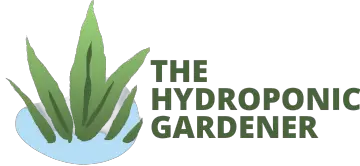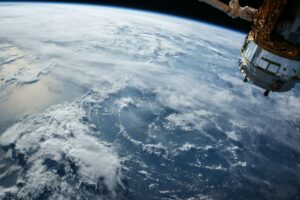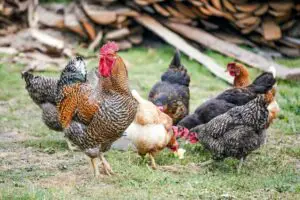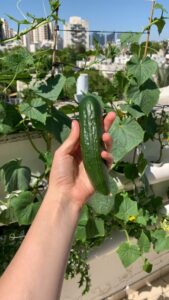Did you know that plants can grow in space? It’s true! Hydroponic systems are used to grow plants in space, and it is important for human survival. In the real life, The International Space Station uses hydroponics for its purposes.
In this post, we will discuss the importance of plants in space and how hydroponic systems work to help them grow!
What is hydroponics and how do hydroponic systems work?
Hydroponics is the process of growing plants in water rather than soil. In space, hydroponic systems are commonly used to grow plants because they are lightweight and require less space than traditional soil-based gardening methods.
How do hydroponic systems support plant growth in space?
Hydroponic systems work by providing plants with a nutrient-rich liquid solution that contains all of the essential nutrients they need to thrive. Additionally, hydroponic systems are often fitted with specialized lighting and monitoring equipment to help maintain optimal growing conditions for plants, such as temperature, pH level, and moisture levels. Thanks to these advanced technologies, plants grown in space using hydroponics are able to stay healthy and flourish even in the harsh conditions of space.
Why is gardening in space important for human health and survival?
There are many benefits of gardening in space for human health and survival. For one, plants are a vital source of oxygen, food, and medicine on earth, providing humans with essential nutrients and key compounds that help support our health and well-being.
In space, plants can serve a similar role, helping to maintain the health and vitality of astronauts by providing them with essential vitamins and minerals, and breathable air.
Additionally, gardening in space can promote psychological well-being for astronauts by providing a sense of normalcy and routine in an otherwise unfamiliar environment. Studies have shown that gardening can help reduce stress and improve mood by providing a sense of control, purpose, and meaning in one’s life.
Given these benefits, it is clear that gardening in space has an essential role to play in human health and survival. Whether for astronauts or earth-based communities facing limited resources, hydroponics systems are an important tool for growing plants and maintaining our overall well-being.
What are some examples of these systems on the International Space Station?
One example of a hydroponic system on the International Space Station is the Advanced Plant Habitat or APH. This highly-specialized system is designed to provide optimal growing conditions for plants in space, including precise temperature and humidity levels, specialized lighting, and nutrient delivery systems.
Other examples include the Veggie facility, which allows astronauts to grow plants directly from seed, and the various plant-growth modules that astronauts use to cultivate fresh produce for consumption on board the ISS.
What is NASA’s part in hydroponics experiments?
NASA has been involved in hydroponics experiments for many years, working to develop new technologies and systems that can help support plant growth in space. In particular, NASA’s Advanced Plant Habitat program aims to advance our understanding of plant biology and improve the technologies needed to grow plants in extreme environments like outer space.
Other examples include NASA’s Veggie program, which aims to develop space-friendly growing methods and technologies that can be used in future deep space missions. By working to advance hydroponics research and development, NASA hopes to help pave the way for future human exploration of deep space destinations like Mars.
What are some of the challenges facing hydroponic gardening in space?
One key challenge facing hydroponic gardening in space is maintaining optimal growing conditions for plants in an environment that is constantly changing and challenging. For example, plants in space may need to be replanted or relocated based on variables like light exposure, nutrient availability, and water levels. Additionally, the quality of hydroponic solutions can deteriorate over time if they are not properly maintained or replaced, leading to lower yields and reduced plant growth.
Other challenges include the high cost and technical complexity of hydroponic systems, as well as the limited space on board spacecraft. However, despite these challenges, hydroponics is an important tool for supporting plant growth in space, due to its ability to provide optimal growing conditions for plants even in challenging environments. With continued innovation and research, we can look forward to more advanced systems and techniques for growing plants in space.
So, what are the benefits of growing plants in space, both for humans and for the environment?
There are many benefits of growing plants in space for both humans and the environment. For one, plants are an important source of oxygen, food, and medicine on earth, helping to support human health and well-being. In space, this role is even more critical, as astronauts must rely on plants for their survival due to limited resources and the harsh conditions of space travel.
On a broader level, growing plants in space can help reduce our impact on the environment by providing an alternative source of food and energy for humans. Hydroponic systems use minimal resources such as water, nutrients, and energy, making them an efficient way to produce food without relying on land or other natural resources. Overall, the benefits of growing plants in space are wide-ranging and essential to human health and survival.
Why are there plants on the expanse’s Rocinante’s kitchen?
Just before the end, one geeky moment if you please. Watching The Expanse with my husband, we saw hydroponic plants on walls starred Amazon Prime’s The Expanse: On the Rocinante’s kitchen, on walls in Ceres station and they even had a botanist growing hydroponics in the 4th season.
They are there for a number of reasons.
- First, plants provide important nutritional and psychological benefits to the crew in space, helping to improve their mood and well-being.
- Additionally, they provide an alternative source of food and energy in space, reducing our impact on the environment by minimizing our reliance on land and other natural resources.
- The wheel they grow plants on – is not a commonly used hydroponic system. This green wheel is NASA-inspired, doing cool things with gravity.
- One key theme in the series is the scarcity of resources in space: water, air, and food. The plants there are to also emphasize that the Roci is a relatively convenient ship, Noah’s Ark detached from the triangle Earth-Mars-Belt. Each time they choose to take part in this war, in a choice they make despite the convenience of their bubble – so they’ll be able to maintain it.
Conclusion:
At the end of the day, whether we are traveling in space or on earth, plants play an essential role in our lives. Whether for nutrition, medicine, or psychological well-being, their importance cannot be understated. Hydroponic gardening is a key tool for cultivating plants in space and ensuring their continued growth and success. With continued research and innovation, we can look forward to even more advanced systems and techniques for growing plants in space.
FAQ
1. Hydroponic systems are important for space travel because they allow astronauts to grow plants in challenging environments, without needing access to land or natural resources. These systems are specifically designed to provide optimal growing conditions for plants, including light, temperature, water, and nutrient levels.
Absolutely! Hydroponic systems are widely used in space programs, from the International Space Station to future spacecraft and colonies on Mars. These systems provide a reliable source of food and oxygen for astronauts while minimizing the use of resources such as water and energy. Hydroponics is also an important tool for supporting plant growth in other extreme environments, both on earth and beyond. Whether in space or on earth, hydroponics is a key technology for ensuring the continued growth and success of plants.






